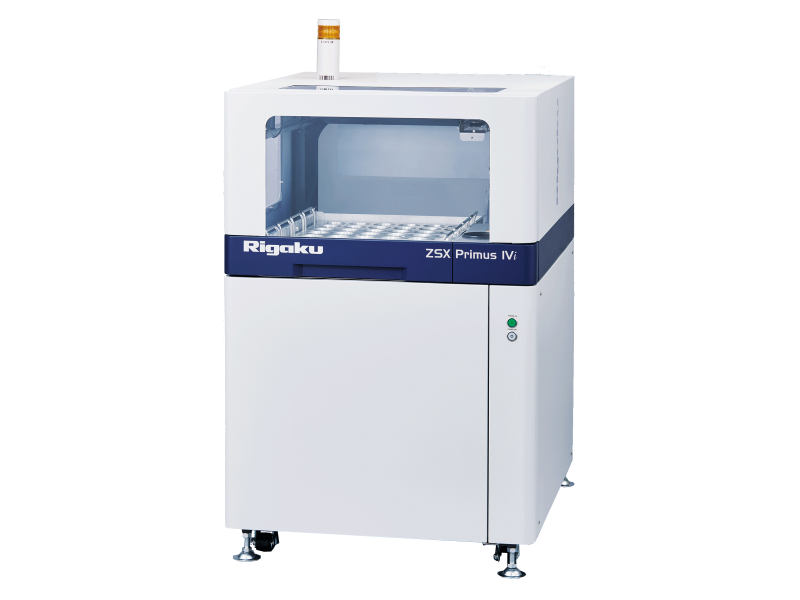ZSX Primus IV𝒾
TUBE-BELOW SEQUENTIAL WAVELENGTH DISPERSIVE X-RAY FLUORESCENCE SPECTROMETER
X-ray analysis of liquids, alloys, and plated metals with no compromises.
The high-performance tube-below type allows for uncompromised study of liquids, alloys, and plated metals. The ZSX Primus IVi WDXRF spectrometer incorporates a 30 micron Be tube window, the narrowest standard tube window in the industry, providing great light element (low-Z) detection limits and superior performance with the versatility to analyse the most complicated samples.

Features
- ZSX Guidance provides assistance with measurement and analysis.
- The upgraded third-generation SQX analysis programme includes automated analysis settings.
- Guidance software ZSX
Complex settings are handled by built-in XRF knowledge. - Turnkey operations are possible using the application packages that are available.
- Easy-to-use software that may be programmed for everyday analysis using sample trays.
- For each tray, a sample of ID settings (facilitates easy copy-and-paste for efficient measurement setup).
- Liquid sample analysis has improved in accuracy.
- Correction of the geometry effect produced by the liquid sample cups’ geometry.
- High-precision, high-speed measurements
The redesigned drive sequence’s efficiency reduces instrument overhead time. - Functionality that is unique
The tube-below optics facilitate functionality, such as fresh sample film corrections.
Vacuum (partition) system for analyzing liquids
The shift from vacuum to helium environment takes less than two minutes because the spectrometer chamber is always under vacuum. Furthermore, when compared to versions that require the spectrometer chamber to be purged, the use of helium gas is greatly reduced.
Improved throughput
The analytical dead time is reduced because to improved mechanics. A 16-element sequential quantitative measurement time, for example, was reduced from 348 seconds to 287 seconds, a gain of 18% in efficiency.
D-MCA high-speed analysis
The Digital Multi-Channel Analyzer (D-MCA) system allows for high-speed digital processing at high count rates, resulting in greater analytical precision and faster throughput.
Optical system not easily impacted by sample surface height variations
The distance between the sample and the X-ray tube varies due to an uneven sample surface. Changes in X-ray intensity can result from these variances. Rigaku optical systems allow for the suppression of X-ray intensity fluctuations due to distance changes. This allows for more precise analysis by reducing the impact of shape variances from fusion moulds used in glass bead manufacturing, as well as the impact of uneven sample surfaces during powder sample pressing.
Point/mapping analysis
A high-resolution camera allows the user to zoom in on minute details…
